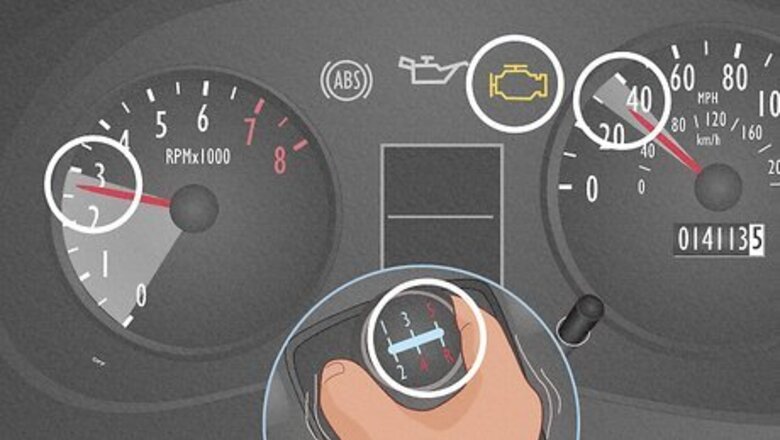
views
- Limp mode is a low-power safe mode that is meant to prevent severe damage to your car's engine and transmission.
- You can bypass limp mode by restarting your car, checking the fluid levels, disconnecting the battery, or scanning it with an OBD scanner.
- When limp mode is active, you should avoid driving unless absolutely necessary. Avoid highway travel and take routes that are less traveled.
Signs of Limp Mode
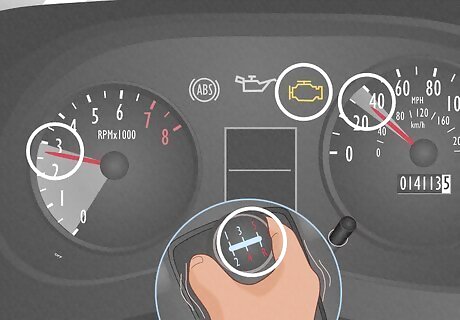
Limp mode is a safety feature that limits your car's power and functionality. Limp mode, also known as "limp-home mode," activates when your engine control unit (ECU) or transmission control unit (TCU) detects a problem with your car. The purpose of limp mode is to give your car just enough power so that you can drive to a nearby mechanic or get your car home without causing serious damage to the engine or transmission. Check engine light. If your car goes into limp mode while you're driving, the check engine light will usually light up or flash. Limited speed. In limp mode, your car will usually be limited to between 30 and 45 MPH. Low RPMs. When limp mode is activated, your engine will typically be limited to less than 3000 RPM. Unable to shift into high gear. On some cars, limp mode prevents you from shifting past 3rd gear. On other cars, you may not be able to shift gears at all. Poor Performance. Acceleration may feel sluggish. Your car may also feel jittery, and your engine may misfire. Disabled features. Unnecessary features, such as your car's air conditioning, may not be available when your car is in limp mode.
How to Bypass Limp Mode
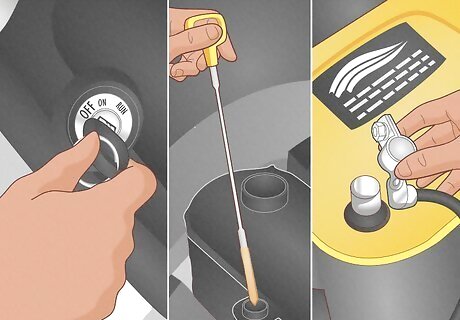
Limp mode has engaged to protect the engine and transmission from catastrophic failure. It's designed to help you drive long enough to get home (or to a mechanic). While there are several things you can do to bypass limp mode, most are temporary fixes—if the problem is serious, your car will enter limp mode again. Furthermore, bypassing limp mode when your car has a serious issue may damage your engine or transmission, which may cost more to fix in the long run. To bypass limp mode: Turn off your car and let it rest. Find a safe place to pull over, and turn off your car. Leave your car off for about 5 minutes, then restart the car and see if you can shift into high gear. Check your oil and transmission fluids. Check your oil and transmission fluid, and top off if either are low. Disconnect the battery. If your car still goes into limp mode, disconnect the battery and wait for about a half hour to reset your car's computer. After a half hour, reconnect your battery and shift gears to see if you are still in limp mode. Scan your car for errors. Use an OBD2 scanner to scan your car for codes. The OBD2 scanner will display codes you can use to diagnose your car. You can then clear the codes to bypass limp mode. In many cases, clearing the codes will be temporary. If there's still a major error, the check engine light will reengage, and the code will come back. Take your car to a mechanic. If you are knowledgeable enough to fix your car yourself, you may do so. Otherwise, you may need to take your car to a professional mechanic to have it checked out. Have any repairs done that need to be done. The longer you wait, the more expensive it will be.
Causes of Limp Mode
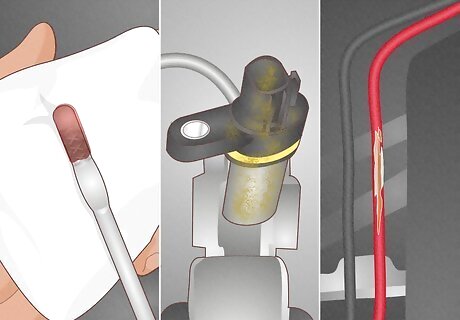
There are several malfunctions that can cause your car to go into limp mode: Low fluid levels. Low oil and transmission fluid levels can cause your car to go into limp mode. When your transmission fluid is low, it can cause low pressure, which will prevent your transmission from operating properly. Faulty sensors. Your car has many sensors attached to the engine and your transmission, which your car's computer uses to diagnose your problems. If one of those sensors is sending inaccurate signals, it can cause your car to activate limp mode. Bad parts. Limp mode can also be caused by failed fuel injectors, coil packs, bad spark plugs, and emissions equipment that is missing or tampered with can cause your car to go into limp mode. Damaged wires. Electrical wires can be damaged by heat, debris, or leaking fluids. If a wire is damaged, it can cause your car to think that a part has failed, which can cause your car to enter limp mode. Failing clutch or transmission. If your clutch or transmission has failed, is failing, or has loose or missing parts, your car may enter limp mode to prevent further damage. Consistent knock or misfire. One or two knocks or engine misfires won't cause your car to go into limp mode, but it can if it happens consistently. Vacuum or boost leaks. A vacuum or boost leak can cause a significant amount of air to flow into the combustion chamber. If the air-to-fuel ratio is significantly off from the normal amount, your car may enter limp mode. Overboost. On turbocharged cars, if the car's boost pressure is significantly higher than the ECU's target boost pressure for an extended period of time, it can the car to go into limp mode. This is usually caused by a failed booster controller or wastegate solenoid. Overheating. If your car is overheating, your car may enter limp mode so that the ECU can cut fuel to some of the cylinders to allow them to cool.
Preventing Limp Mode
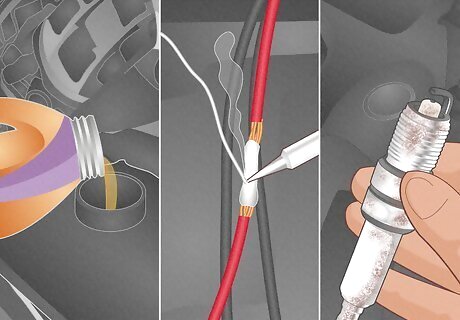
There are many things you can do to prevent limp mode. A lot of it comes down to basic car maintenance. Not only will you prevent limp mode, but you will also extend the life of your car. Use the following measures to prevent limp mode: Check your fluids regularly and top them off. The most important thing you can do is to check your fluids regularly. Make sure your car has fresh oil and transmission fluid. Inspect your car's wiring. Make sure there are no loose or damaged wires. Check your engine and replace any faulty parts. This includes engine belts, spark plugs, and dirty filters. Check your engine temperature gauge regularly. Make sure it doesn't go above 1/2. Do not ignore warning signs. If your car experiences any performance issues, such as slow gear shifting, slow acceleration, unusual performance issues, or you hear rattling or clanging, take your car to a professional mechanic to have it looked at.



















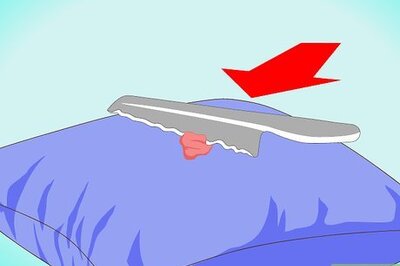
Comments
0 comment